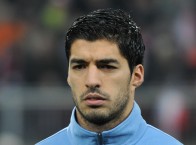Judit Polgar, considered as the strongest female chess player in the history, achieved the title of Grandmaster at the age of 15 years and 4 months. Here are 50 facts about the Chess Grandmaster:
- She was the World No.1 women player in the world for a period of over 26 years starting from the age of 12 in 1989.
- She was born on July 23, 1976 in Budapest, Hungary to Laszlo Polgar and Klara Polgar. She has two older sisters - Susan and Sofia.
- Polgar along with her sisters was part of an experiment by her parents. They believed children can be molded if trained at a very early age. They were educated at home with chess as specialist subject. Geniuses are made, not borne.
- She and her sisters were in conflict with Hungarian Chess Federation with the policy of female only events. She has rarely played women’s only chess tournament. She advocates gender neutrality and feels women can be as good as male only if they are willing to work and take it seriously.
- She, although 5 years younger than her sisters, was always able to find solution to their chess problems. Once she was woken from sleep and carried to training room to solve a chess problem for an International Master still half asleep.
- She was prodigy who at age of 5 was able to defeat a family friend in a game of chess without looking at the board. She was trained by her sister in her youth.
- Polgar was a slow starter but very obsessive with the game of chess. She was good enough to beat an International Master Dolfi Drimer at the age of 10 and by 11 she defeated Grand Master Lev Gutman.
- She started participating in the tournament at six years and her Elo rating was 2080 in three years. As a member of chess club in Budapest, she defeated a chess master in a blindfold game as seven years old. He was too slow to her liking.
- As a 9 year old she participated in a rated tournament in U.S in April 1986. She won her first seven games and drawing one to win the unrated section.
- In April 1988, Polgar playing a tournament in New York Open in the International B section, she achieved her first International Master Norm.
- In August 1988, she won the Boys U-12 section in the World Youth Chess and Peace Festival in Timisoara, Romania. In October the same year, she won a 10-player round robin tournament in London scoring 7-2 points. With these three victories she became International Master. She is the youngest in the world at 12 years to be awarded the title.
- She feels girls are not serious enough in chess compared to boys. They are distracted by cooking and household chores. Polgar trains for five to six hours a day.
- In November 1988 she represented Hungary in 28th Chess Olympiad, Thessaloniki, Greece in the women’s section. They were not permitted to compete in the boys section in team competition by International Chess Federation.
- Hungary women’s team won the championship with 33 point relegating Soviet to second position. This is the first time Olympiad is not won by the Soviets. Polgar won the individual gold medal in the second board and also brilliancy prize for her game against Pavlina Angelova.
- Ranked 55 in the world with an Elo rating of 2555 on January 1989, she was 35 points clear of next women player, Maia Chiburdanidze the reign Women’s World Champion.
- British Chess Magazine declared Polgar’s rise in chess ranking makes Fischer and Kasparov’s performances at the same age pale by comparison. She was 13 years when she broke into top 100 players in the world.
- She was hailed by British GM Nigel Short to be the one among the few great prodigies in history of chess. She was compared with Paul Morphy, Jose Capablanca and Samuel Reshevsky.
- In 1989, American President George H.W.Bush and his wife Barbara met Polgar sisters during their visit to Hungary.
- In 1990, a documentary “Chess Kids,” was filmed featuring Polgar about children playing chess. She was not allowed to be interviewed as she was not being paid.
- In 1990, she won a gold medal representing Hungary women’s team in the Olympiad. She also won the under-14 title in the World Youth Chess Festival in the boys section in the same year.
- In December 1991, she won the Hungary National Championship and in process she achieved the Grand Master title. She won the championship with a score of 6/9 in one of the strongest field. At 15 years 5 month, she is the youngest to have achieved the title.
- In September 1992, in a tournament played at Aruba involving senior men against top women players, Polgar finished second overall with 7 ½ to 4 ½ .
- In 1992-93 Hasting tournament, she went in to the final round against Russian GM Evgeny Bareev trailing him by a point. She won the game and shared the title with him.
- She played an exhibition match against Boris Spassky for the prize money of $110,000. She won the match 5 1/2 – 4 ½ and earned her largest prize of career.
- Participating in the 1993 Melody Amber blindfold tournament in Monaco in field of 12 strong grand masters, she finished creditable fourth with 6 ½ from 11 rounds.
- In 1993, she became the first women to qualify for the men’s Interzonal tournament. She won the tiebreaker after finishing second in four way ties in the Budapest Zonal.
- She won the Madrid International, Spain in 1994 with 7-2 clear 1 ½ points ahead of second place. She considers her win as the greatest of her career at that time because of the field which includes Gata Kamsky, Evgeny Bareev, Valery Salov and Ivan Sokolov.
- In the summer of 1993, a match of blitz chess was arranged between Polgar and Bobby Fischer, when he was their guest. He cancelled the match as he was anti-Semite and against Jew.
- In October 1994, she participated in a testimonial match to Polugaevsky at Buenos Aires in which black to play a Scilian Defence. She was placed third tied with Ivanchuk in a field consisting of eight grandmasters all world championship contenders.
- In 1995, she won the double round-robin tournament in the Isle of Lewis festival involving four grandmasters. In this tournament the famous Lewis Chessmen was on display due to the effort of Scottish M.P Calum MacDonald.
- In Linares 1994, as 17 years old she cherished an invitation match with the then world champion Garry Kasparov. Polgar lost the match in which Kasparov was found to have violated the rule book.
- As a strongest female chess player of all time she played a match against Brazil champion Gilbert Milos in December 1996. She won the match 2-1 and got the prize money of $12,000. The game is played in two parts with one hour for first 30 moves and the reminder of game in 30 minutes.
- She was praised for her tactical skill during Linares ‘supertournament’ in February 1997. She finished fifth in the 12-G.M tournament with an average of 2701. Her result was considered exceptional.
- On August 26, 1997, in an article in the New York Times, GM Robert Byrne wrote, there is no argument about the greatest female player of all time – 21 year old Judit Polgar.
- In June 1988, she played ‘action’ chess match which is of 30 minutes duration, with the then reign world champion Anatoly Karpov. She won the eight game match 5-3.
- In November 1998, playing in the Wydra Memorial Rapid chess tournament she scored 11 ½ to be tied with Viswanathan Anand. She lost the tie-breaker game.
- She started the year 2000 with a disappointing result in category XVIII tournament in Corus Wijk aan Zee, in the tournament at Pamplona, Spain. She bounced back with a gold medal in the European Team Championship at Batumi, Georgia. Playing on the board 2 she scored 6 ½ -2 ½.
- Polgar won the 2000 Japfa Classic tournament in Bali, Indonesia. The category XVI event was one of the strongest ever to be held in Asia, in which past and current world champions participated. By winning the final game she won the tournament with 6 ½ - 2 ½ point and took $20,000 prize money.
- In the 34th chess Olympiad playing on the board 3, she won the gold with second highest point of 10/13. Hungary narrowly missed the bronze medal.
- In March 2001, she reached the semi-final of elite Linares double round robin invitational tournament. In the quarterfinal, she forced Joel Lautier of France to resign after 12 rounds, when she won his queen. She was applauded by the audience.
- History was made in the Russia versus the Rest of the World match in September 2002. Tournament was played under rapid rules with 25 minutes for per game and 10 second per move. Polgar won her match against Kasparov and helped the Rest of World to win 52-48.
- The win was historic as it was the first time female player beat world no. 1 player in a competitive play. He had least respect calling her ‘circus puppet.’ Polgar said it was one of the memorable moments of her career.
- In 2003, participating in the category 19 Corus Chess Tournament in Wijk aan Zee, Netherland, she defeated Anatoly Karpov in 33 moves employing a novelty in the opening, which he completely lost it. She was placed second undefeated.
- In August 2003, in the ‘Battle of Sexes,’ she played an eight game rapid chess match in Mainz. She was equal to Viswanathan Anand before losing the final two games and the match.
- In August 2000, she married Gusztav Font a Hungarian veterinary surgeon. In 2004, after giving birth to her son, Oliver she took time off from chess. She returned to chess in 2005 and by July she regained her place as eighth ranked player in the world. Her Elo rating was the highest of her career 2735.
- She had her second child, a girl, Hanna, born on July 6, 2006. Her return to chess was met with indifferent result. She was eliminated in first round of the 2007 FIDE World Chess Championship and playing in the 2008 The World Chess Blitz Championship, in Almaty, Kazakhstan she had a terrible result of finishing last in field of 16 players.
- On April 2011, she won the bronze medal in the European Individual Chess Championship in Aix-les-Bains, France. In a tournament of 393 players with 167 grandmasters her performance was praises for creative attacks. She became the first women to be placed in the top three of male championship.
- In January 2012, in the Tradewise Gibralter tournament, she lost to a female player for the first time in 22 years in the classical format. She lost to Women’s World Champion, Hou Yifan.
- Polgar authored a book on chess, “Chess Playground.” She also designed a chess program for the students of Kindergarden School in Hungary.
- In March 2013, for her worldwide acknowledged life achievement as an athlete, she was awarded “Order of Merit of the Republic of Hungary.” In August 2015, she was awarded the “Order of Saint Stephen of Hungary,” the highest civilian award.

 Share on Facebook
Share on Facebook





















